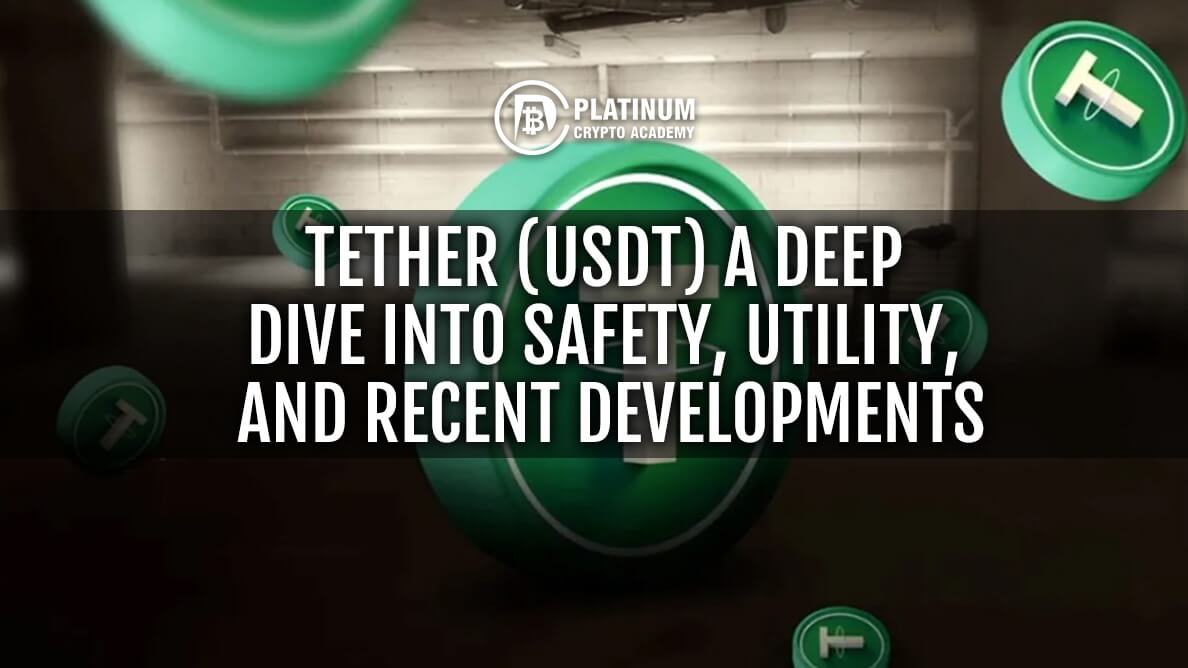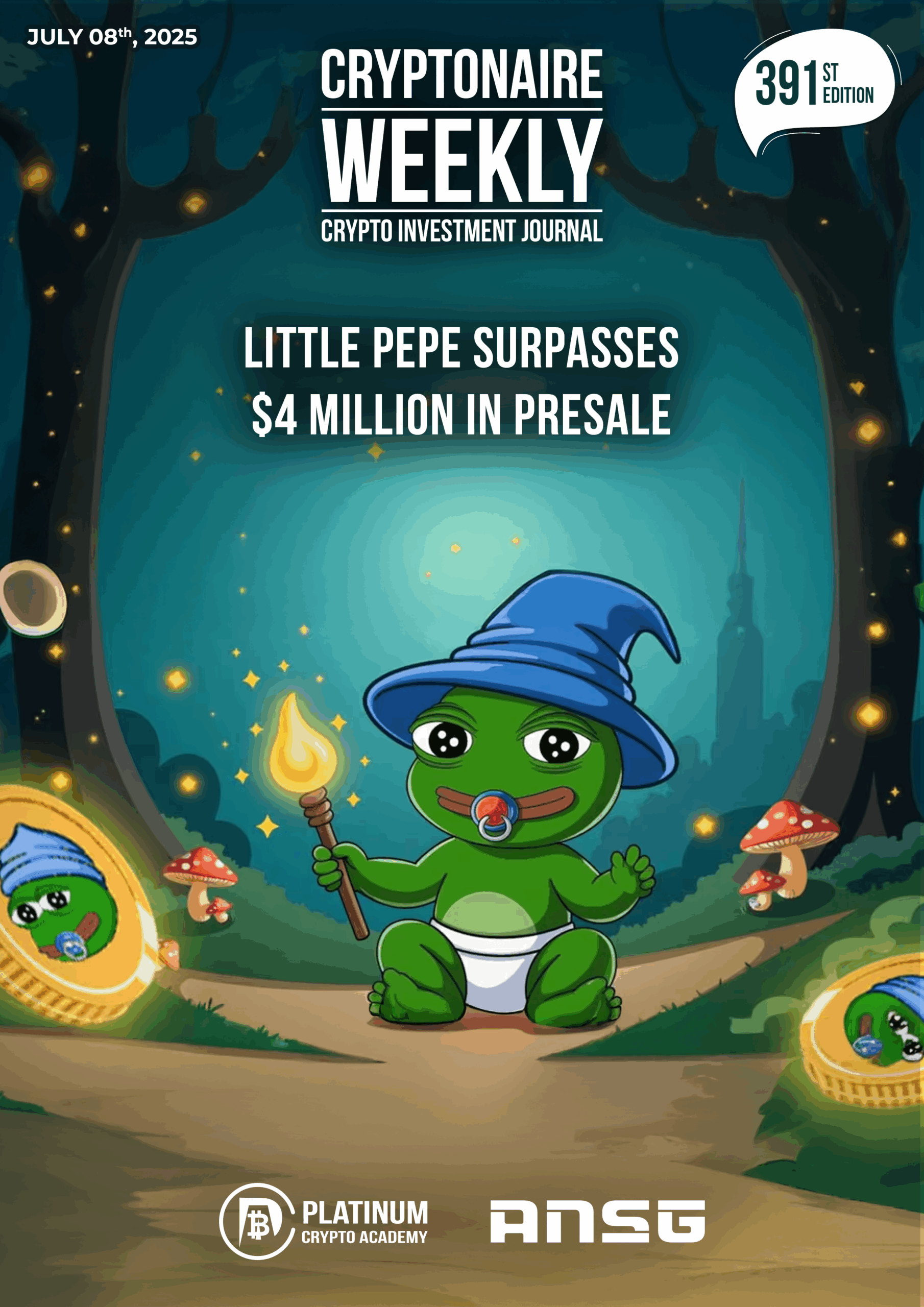Quick Links
Tether (USDT) stands out as a beacon of stability amidst the volatile waves of the crypto market. But as with any financial instrument, it’s crucial to understand its intricacies, especially for the seasoned crypto enthusiast.
Recent headlines have brought Tether back into the limelight. From Tether freezing $873K USDT linked to terrorist activities in Ukraine and Israel, to the promotion of Paolo Ardoino from CTO to CEO, the stablecoin issuer has been making waves in the crypto community. Additionally, a report suggests that Alameda Research might have minted up to $40B of Tether’s USDT. With $9.99 billion worth of Tether now sitting on exchanges, marking the highest level in approximately seven months, the crypto space is abuzz with discussions about USDT’s role and safety.
Understanding Tether (USDT)
Tether, built atop the Bitcoin blockchain, functions as a bridge between fiat currencies and cryptocurrencies. Its primary claim is that each USDT is backed by one US dollar held in reserve, ensuring its stable value. This pegging mechanism has made it a preferred choice for traders looking for a hedge against the wild swings of the crypto market.
Risks Associated with USDT
While Tether offers numerous benefits, it’s not without its challenges:
Reserve Transparency: One of the primary concerns revolves around the transparency and stability of Tether’s reserves. Critics argue that questions about the reserve haven’t been fully addressed.
Regulatory Scrutiny: The crypto industry, especially stablecoins like Tether, faces potential regulatory challenges. Such scrutiny could impact Tether’s operations and its claim of being fully backed.
Market Perception: Any negative news or doubts about Tether’s claims can lead to market panic, affecting its stability.
Strategies for Using Tether (USDT) in Your Crypto Portfolio
For the crypto native, understanding how to strategically use Tether (USDT) can be a game-changer. Here are some advanced strategies to consider:
Hedging Against Volatility: One of the primary uses of Tether is as a hedge against the notorious volatility of the crypto market. When you anticipate a downturn in your crypto assets, converting them to USDT can help preserve value, given its stable nature.
Liquidity in Trading: With its widespread acceptance across major crypto exchanges, USDT can be used to swiftly move funds between platforms. This can be beneficial when trying to capitalize on price differences between exchanges, a strategy known as arbitrage.
Earning Passive Income: Some decentralized finance (DeFi) platforms offer interest on USDT deposits. By parking your USDT in these platforms, you can earn passive income, making your funds work for you even when you’re not actively trading.
Diversifying Portfolio: While it’s essential to have volatile assets for potential high returns, having a portion of your portfolio in stablecoins like USDT can provide a safety net, ensuring not all assets are exposed to high volatility.
Quick Conversions: Given the 1:1 pegging with the US dollar, converting USDT to fiat or vice versa is straightforward. This can be especially useful when you need to quickly enter or exit the market.
Setting Up Stop-Loss: For traders, using USDT as a stop-loss mechanism can be effective. By setting automatic trades to convert volatile assets to USDT when they hit a certain price, you can prevent significant losses during market downturns.
Exploring USDT Pairs: Many exchanges offer various cryptocurrency pairs with USDT. Exploring these can provide more trading opportunities, especially with altcoins that might not have direct fiat pairs.
Trading Tales: Alex’s USDT Journey
Personal experiences often provide the most valuable insights. Let’s delve into the diary of a trader, Alex as he navigates the crypto seas with USDT.
Alex’s Diary:
Day 1: Today, I decided to dive deeper into the world of crypto trading. I’ve heard so much about Bitcoin and Ethereum, but a friend mentioned something called Tether (USDT). A stablecoin, they said. Intriguing.
Day 15: The crypto market is a rollercoaster. Last week, I was ecstatic with my gains, but today, I’m drowning in red. I remember USDT and decide to use it as a safe harbour. Transferring some of my assets into it felt like anchoring myself amidst a storm.
Day 30: I’m starting to appreciate the calm that USDT brings to my portfolio. While other traders panic during dips, I find solace in the stability of my USDT holdings. But there’s this nagging doubt – is it truly as stable as it claims?
Day 45: Rumours are swirling. Whispers about Tether’s reserves not being fully backed. I’m anxious. The very asset I thought was my safety net now feels like a ticking time bomb.
Day 60: Did some digging. While there are concerns, Tether’s transparency efforts and regular audits offer some reassurance. But the emotional toll is undeniable. Every piece of news feels like a potential threat.
Day 75: The market’s stabilizing, and so are my emotions. USDT, with all its pros and cons, has been a learning experience. It’s taught me the value of diversification and not putting all my eggs in one basket.
Alternative Stablecoins for Traders
While Tether (USDT) is undeniably a dominant player in the stablecoin arena, there are several other options that traders can consider:
- USD Coin (USDC): A transparent U.S. dolar stablecoin developed by Circle and Coinbase.
- Binance USD (BUSD): A collaboration between Binance and Paxos, approved by the NYDFS.
- TrueUSD (TUSD): A U.S. dollar-backed stablecoin by TrustToken with third-party verifications.
- Paxos Standard (PAX): Another NYDFS-approved stablecoin issued by Paxos.
- Dai (DAI): A unique stablecoin backed by cryptocurrency collateral, governed by MakerDAO.
- Gemini Dollar (GUSD): Gemini’s audited U.S. dollar-backed stablecoin.
- sUSD (SUSD): A stablecoin from the Synthetix platform.
- TerraUSD (UST): An algorithmic stablecoin from the Terra platform.
- HUSD: A U.S. dollar-backed stablecoin from Stable Universal and Huobi.
- Neutrino USD (USDN): Backed by the Waves platform’s native token.

Each of these stablecoins offers distinct features and benefits. Traders should delve into the specifics of each to determine which aligns best with their trading strategies and risk tolerance.
Conclusion
Tether, with its promise of stability in the crypto market, has garnered significant attention. However, like any investment, it comes with its set of risks. For the crypto native, it’s essential to stay informed, understand the benefits and challenges, and make investment decisions based on thorough research. Personal experiences, like those of Alex and Jordan, offer valuable insights into the emotional and strategic complexities of crypto trading.
Hopefully, you have enjoyed today’s article. Thanks for reading! Have a fantastic day! Live from the Platinum Crypto Trading Floor.
Earnings Disclaimer: The information you’ll find in this article is for educational purpose only. We make no promise or guarantee of income or earnings. You have to do some work, use your best judgement and perform due diligence before using the information in this article. Your success is still up to you. Nothing in this article is intended to be professional, legal, financial and/or accounting advice. Always seek competent advice from professionals in these matters. If you break the city or other local laws, we will not be held liable for any damages you incur.


